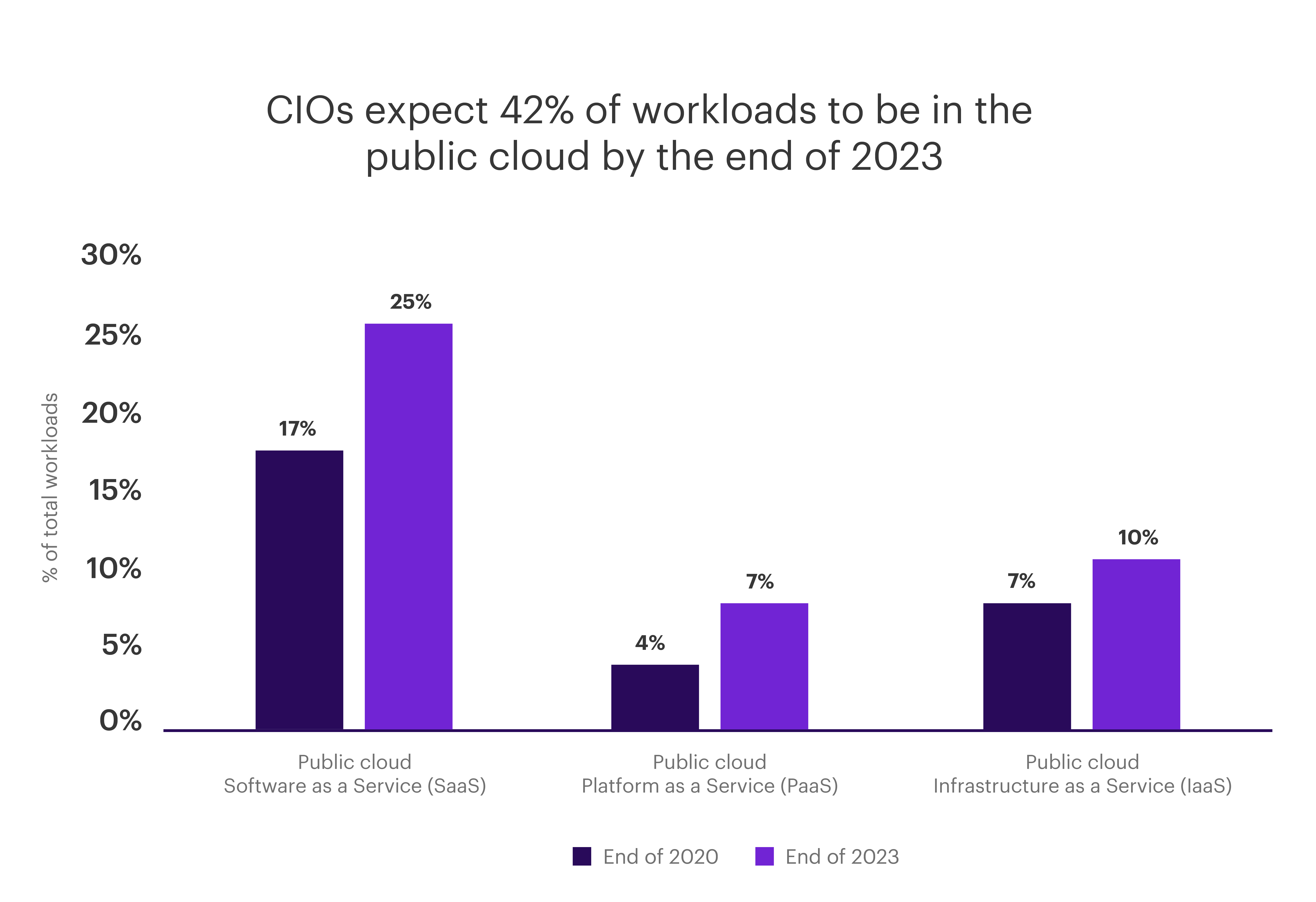Survey reveals cloud computing top CIO priority
Insights from Morgan Stanley Research
07/26/21As people spend more time working, shopping, and entertaining themselves online, demand for vast amounts of data processing and internet bandwidth has surged. To keep up, many businesses have shifted data, software, and applications off their own servers and into remote servers known collectively as "the cloud."
Instead of running on one device (like a word processing platform saved to a hard drive), the cloud enables software and services to run on the internet (like a shareable, collaborative document), tapping data stored across several different servers. Over the years, the cloud has become a core component of business operations—and big business in its own right.
Morgan Stanley's recent survey of 100 Chief Information Officers (CIOs) revealed that the evolving world of cloud tech remains top of mind among business leaders. For investors interested in the cloud computing space, we break down the landscape and highlight key findings.
Migration continues across all cloud services
Cloud computing has made the list of top three CIO priorities since 2016, which may not be all that surprising considering it affects nearly every mission-critical technology within a business. CIOs reported an ongoing increase in the percentage of workloads currently running in the public cloud, and expect 42% will be in the cloud by 2023.
Although the term “cloud” may seem like a single technology, there are three main categories of cloud computing services that each carry their own business benefits: IaaS, PaaS and SaaS. Software as a service (SaaS) is the most common, offering a variety of cloud-based tools, services, and applications for everyday use. Infrastructure as a service (IaaS) allows companies to manage important infrastructure—networks, servers, and data storage—on the cloud, while platform as a service (PaaS) helps them create and deploy consumer-facing apps.
Adoption of all types of cloud services, including SaaS, PaaS, and IaaS, is expected to increase by 2023, according to CIOs.

Source: AlphaWise, Morgan Stanley Research
Broad range of initiatives
With companies now several years into cloud migration, no single cloud initiative appears to dominate agendas. From IT operations to customer service and sales, survey results reveal CIOs are undertaking a broad range of cloud computing projects.
Interestingly, most CIOs expect to further leverage cloud infrastructure to consolidate data. Almost 65% of CIOs anticipate a cloud-based data warehouse or “data lake” initiative over the next three years, allowing them greater flexibility to harvest insights from structured and unstructured data sources. By contrast, just 20% of CIOs noted such initiatives were in place today.
Budgets bounce back
A rebound in budgets may help fuel the IT acceleration. CIOs expect IT budgets to grow 3.9% in 2021, and longer term, almost 40% see IT budgets growing as a percentage of overall business revenues.
Specifically, CIOs see the most spending growth for software, boding well for future cloud computing projects.

Source: AlphaWise, Morgan Stanley Research
With continued expansion likely indicative of the rising importance of IT in driving growth and enterprise efficiencies, the outlook for cloud computing appears, well, not very cloudy.
What investors should consider
Those who are looking for investing opportunities covering a wide array of companies with a single investment may look to mutual funds or exchange-traded funds (ETFs) focused on cloud computing technologies.
ETFs and mutual funds are both collections, or “baskets," of individual stocks, bonds, or other assets—in some cases hundreds of them—all pooled together. When an investor buys a share of the fund, they own a small piece of this basket of assets. ETFs and mutual funds are similar in that they give a broad range of investment choices and inherently offer greater diversification compared to a single stock. That said, there are distinct differences in these investment choices. The price of an ETF fluctuates throughout the trading day. ETFs also tend to have lower fees and are typically passively managed—mirroring the performance of an index. On the other hand, a mutual fund’s price (commonly referred to as net asset value) is calculated just once a day, typically has higher expense ratios, and is managed by professional fund managers who actively try to outperform a market or index.
To learn more about the distinctions between mutual funds and ETFs, check out ETFs vs. mutual funds: Understand the difference.
The sources of this article, “4Q20 CIO Survey – Where is a Better Outlook Good Enough?” and “1Q21 CIO Survey – Data Suggests IT Acceleration” were originally published on January 12, 2021, and April 8, 2021, respectively.
How can E*TRADE help?
Thematic Investing
Find ETFs that align with your values or with social, economic, and technology trends.
Choice ETFs
Choose from a list of exchange-traded funds, selected by Morgan Stanley Smith Barney, LLC.
Brokerage account
Investing and trading account
Buy and sell stocks, ETFs, mutual funds, options, bonds, and more.